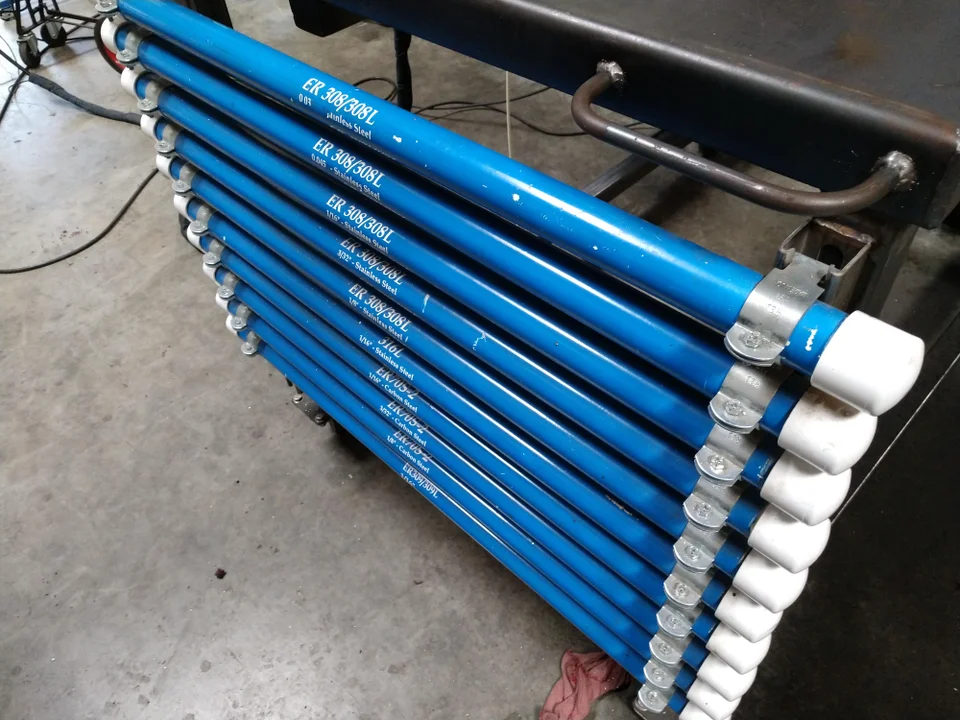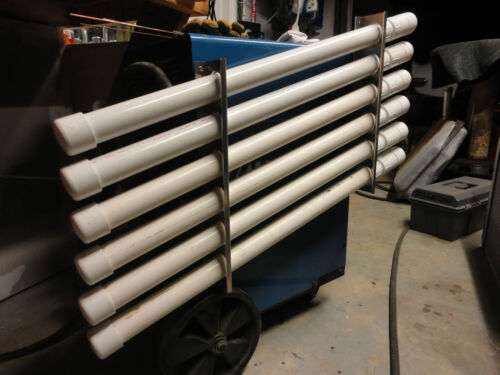Few things are worse than a weld failing because the rod was exposed to moisture. Even a small amount of water can result in a poor-quality arc and keep your welding from being as strong as it could have been or from lasting as long as it should have.
In this article, you will learn great tips on storing your welding rods and keeping them dry.
Table of Contents
Do All Welding Rods Need to Be Dry?
Yes! For instance, it is crucial to keep certain types of rods away from moisture more than others. But, it is important to keep all rods dry and away from humidity as much as possible.
Low Hydrogen rods are more negatively affected by moisture than any other grade. Affected rods are probably less important to the hobby welder than the code welder, whose welds must meet minimal standards.
An example would be a person using a slightly defective rod to weld nuts and washers together for an art piece compared to, for instance, a welder manufacturing steel trailers for hauling heavy equipment down populated highways.
How to store welding rods properly?
Welding rods are an essential part of your welding kit. If you want to store them properly, there are a few things that you need to keep in mind.
- If you have used or have recently opened a rod box, it’s important to clean it before you use it again for new ones. This will ensure that your new rods remain undamaged by rust and dirt inside the box.
- Store your Welding rods away from direct sunshine and water leaks to maintain their integrity. I like hanging them on nails in areas without windows and limited light exposure. Make sure rain droplets or leaks won’t reach them.
- Once you open the box, store them with their lids facing up so they don’t lose shape over time.
- After storing welding rods in a closed box, check them each two weeks to see if some rust or dirt accumulation appears inside the box. Throw them away if they’re more than halfway rusted through (roughly 2/3rds).
- If the rods become clogged with dirt, clean them and place them in a separate container.
- You can store welding rods for up to two years if they’re kept away from direct sunlight without any damage due to rust or dirt.

Do All Welding rods Fail the same Way?
Not all rods are as adversely affected by a small amount of humidity as others are. A welder does not need to worry as much about the E6011 rod soaking up humidity as they would an E7018 rod.
Depending on what you are building and for what purpose should determine how much time, money and effort you need to spend worrying about keeping your welding rods dry.
I think it is most important to, at the very least, store all new rods in a dry, sealed container immediately after opening their original container. I have kept E6011 rods for long periods like this with no issues whatsoever.
E-XX10, 11, 12, & 13 rods can be stored in dry boxes at room temperature. In contrast, nearly all other rod grades should be stored at temperatures from 150 – 400 degrees Fahrenheit, depending on the manufacturer’s recommendations.
Why do welding rods need to be kept dry?
Electrodes degraded by moisture will not deposit quality welds as dry rods. Rods that have absorbed too much moisture may lead to weld cracking and porosity. Other welding characteristics, such as arc performance, may also be affected.
A low hydrogen rod coating that has absorbed moisture may produce a weld with hydrogen-induced cracking, especially in harder metals with a yield strength of 80,000 psi and higher.
Harder metals are inherently more brittle to begin with. Using wet, low hydrogen rods potentially increases the brittleness in the weld. This may cause under-surface cracking and porosity, only detected by X-ray or destructive testing.
In addition, it may cause surface cracking, surface porosity, excessive slag fluidity, difficulty removing slag and a rough weld surface.

How do you re-dry low hydrogen and other electrodes?
When done by the book, re-drying restores the electrode’s ability to function as originally designed. The specific time and temperature for the re-drying process depend on the electrode type.
Exceeding the recommended temperatures or heating at lower temperatures for longer than specified is NOT recommended!
For the serious welder performing serious work that needs the weld to be at least as strong as the base metals, only a rod oven will do.
NOTE: When using a rod oven always remember to spread the electrodes out in the oven to ensure each electrode reaches the correct drying temperature.
- Any electrode where the coating begins to flake and break off should not be used.
- Any rod that displays a noticeable difference in the amount of spatter, porosity or weak, erratic arc force should also be discarded.
- For low hydrogen rods that have been in direct contact with water or have been exposed to high humidity: Pre-drying is recommended for 1-2 hours to lower the risk of oxidation of the alloys and to prevent cracking in the rod’s coating.
Please reference the chart below from Lincoln Electric for Re-drying Low Hydrogen Rods.
| Redrying Temperature | |||
| Condition of Electrodes | Pre-drying Temperature | E7018, E7028 | E8018, E9018, E10018, E11018 |
| Electrodes exposed to air for less than one week; no direct contact with water. | N/A | 650 to 750°F (340 to 400°C) | 700 to 800°F (370 to 430°C) |
| Electrodes that have come in direct contact with water are exposed to high humidity. | 180 to 220°F (80 to 105°C) | 650 to 750°F (340 to 400°C) | 700 to 800°F (370 to 430°C) |
Re-drying non-low hydrogen electrodes
Most rods stored in dry, sealed containers will be good for a long time. However, if exposed to humidity for long periods, stick electrodes from opened containers may pick up enough moisture to affect welding characteristics or weld quality, as previously stated.
If moisture appears to be a problem, you may store your electrodes in heated cabinets at 100 to 120°F.
It is possible that some electrodes from wet containers or extended contact with high humidity can be re-dried.
Please reference the chart below from Lincoln Electric for Re-drying Non-Low Hydrogen Rods.
| Stick Electrode | Electrode Group | Final Re-drying Temperature | Time |
| E6010 E6011 E7010-A1 E7010-G E8010-G E9010 | Fast Freeze – excessive moisture is indicated by a noisy arc, high spatter, rusty core wire at the holder end, or objectionable coating blisters while welding. Re-baking of this group of stick electrodes is not recommended. | Not Recommended | N/A |
| E7024 E6027 | Fast Fill – excessive moisture is indicated by a noisy or “digging” arc, high spatter, tight slag, or undercut. Pre-dry unusually damp electrodes for 30 – 45 minutes at 200°F to 230°F (90 – 110°C) before final drying to minimize coating cracking. | 400 to 500°F (200to 260°C) | 30 – 45 minutes |
| E6012 E6013 E7014 E6022 | Fill Freeze – Excessive moisture is indicated by a noisy or “digging” arc, high spatter, tight slag or undercut. Pre-dry unusually damp electrodes for 30 – 45 minutes at 200° – 230°F (90° – 110°C) before final drying to minimize cracking of the coating | 300 to 350°F (150 to 180°C) | 20 – 30 minutes |
In Summary
Depending on the seriousness of your project or the welding work you do in general, spending money on a rod oven is probably unnecessary. I have never had one nor feel the need ever to own one.
I use E6011 rods almost exclusively on milder steel. Now, I have come across E6011’s that were damaged by moisture, but if you keep them in a sealed container, you will not have many problems even after several months.
The good thing is that I can purchase E6011’s in large quantities, saving money. Then, I can store them for long periods without worrying.
Since this site focuses on the beginner, I doubt many of you will be welding higher-strength metals, necessitating using higher-strength rods.
At least not for a while. But when you do, use the correct electrode for the steel you are welding, especially if the failure of the weld could endanger life or limb now or in the future.
Read Next
- 7 Useful Vertical Stick Welding Tips
- 13 Ways to Improve Your Stick Welding Skills
- Tips to select Welding Amperage?
- Differences Between Welding Brazing and Soldering
- The Best Welding Machine for Beginners
- Beginner Projects for New Welders
- Protective essential tips for the Beginner Welder
- What do I need to start welding as a beginner?
- What are differences between 7018 and 6010 welding rods?
